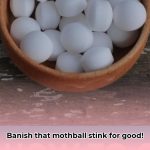Hey there, food lovers and garden gurus! Let’s explore the wonderful world of banana peppers—those vibrant, mildly spicy gems that add a zesty kick to any dish. We’ll uncover their unique flavor, demystify their relationship to pepperoncini, and equip you with everything you need to grow and use these versatile peppers in your kitchen.
Flavor Burst: Unlocking the Banana Pepper’s Zest
Banana peppers, aptly named for their resemblance to miniature bananas, offer a delightful tangy, slightly sweet flavor with a gentle warmth. Ranging from 0 to 500 Scoville Heat Units (SHU), they provide a pleasant zing without the fiery inferno of habaneros or jalapeños. This mild heat makes them an ideal starting point for those venturing into the world of spicy food.
Their versatile flavor profile allows them to shine in various cuisines and preparations. They brighten salads, add a playful kick to salsas, and bring a unique twist to sandwiches. Pickled or stuffed, the possibilities are endless! As they ripen from pale yellow to vibrant orange or red, their sweetness intensifies, especially when cooked. Some even detect a subtle citrusy note, adding another layer of complexity.
From Seed to Supper: Growing Your Own Banana Peppers
Growing banana peppers is a rewarding experience, even for beginners. These sun-loving plants thrive in full sun and are relatively low-maintenance. Whether you start from seeds or starter plants, imagine the satisfaction of harvesting your own flavorful bounty! Typically reaching 1-2 feet tall, they’re a perfect addition to any garden, big or small. For more tips, check out our resources on growing peppers. Want to paint your garden wall a serene color? Consider baby blue paint for a tranquil backdrop.
Banana Pepper vs. Pepperoncini: Setting the Record Straight
While often confused, banana peppers and pepperoncini are distinct varieties. Banana peppers boast a sweet, sometimes fruity tang, enjoyable both fresh and pickled. Pepperoncini, on the other hand, have a more savory, salty, and often briny flavor due to the pickling process. Texture also sets them apart. Banana peppers maintain a satisfying crunch, even when pickled, while pepperoncini tend to be softer. Though both are mild, pepperoncini generally pack a slightly more noticeable heat. Ongoing research continues to explore the subtle nuances of these pepper varieties.
| Feature | Banana Pepper | Pepperoncini |
|---|---|---|
| Flavor | Sweet, Tangy, Fruity | Savory, Salty, Briny |
| Texture | Crisp | Less Crisp, Softer |
| Heat Level | Mild | Mild (Slightly Hotter) |
Nutritional Powerhouse: The Healthy Perks of Banana Peppers
Beyond their delicious flavor, banana peppers offer a surprising nutritional boost. They are low in calories, high in fiber, and a good source of vitamins C and B6, which support a healthy immune system. They also contain antioxidants and capsaicin, the compound responsible for the heat in peppers, which some research suggests may offer various health benefits.
| Nutrient | Benefits |
|---|---|
| Vitamin C | Immune support, collagen production, antioxidant protection |
| Vitamin A | Healthy vision, skin health, immune support |
| Fiber | Digestive health, satiety |
| Potassium | Blood pressure regulation |
| Iron | Oxygen transport |
| Magnesium & Zinc | Various essential bodily functions |
While current research suggests these benefits, ongoing studies continue to explore the full impact of banana peppers on our well-being.
Culinary Adventures: Exploring Banana Pepper Delights
Banana peppers are incredibly versatile in the kitchen. Here are some ideas to inspire your culinary creativity:
- Pickling: A classic way to preserve and enhance their tangy flavor.
- Stuffing: Fill them with cheese, sausage, or other savory combinations for a delicious appetizer or side dish.
- Salsas and Relishes: Add a zesty kick to your favorite recipes.
- Hot Sauces: Incorporate them into homemade hot sauces for a mild to moderate heat.
- Raw: Slice them and add them to salads, sandwiches, or pizzas for a burst of fresh flavor.
Explore specific banana pepper varieties, like sweet or hot banana peppers, each with unique flavor profiles and ideal uses. Delve into in-depth guides on pickling, fermenting, or crafting unique condiments like banana pepper jam. Research their cultural significance in different cuisines and discover regional specialties. While some sources suggest caution with pets, consult your veterinarian for the most up-to-date information.
With their vibrant flavor, versatility, and ease of growth, banana peppers deserve a spot in your garden and on your plate. So, next time you’re at the grocery store or planning your garden, don’t overlook these little gems. They might just become your new favorite ingredient!
- How to Get Mustard Out of Clothes: A Complete Guide - April 26, 2025
- How to Get Motor Oil Out of Clothes: Proven Methods & Step-by-Step Guide - April 25, 2025
- How to Get Mothball Smell Out of Clothes: A Complete Guide - April 25, 2025









